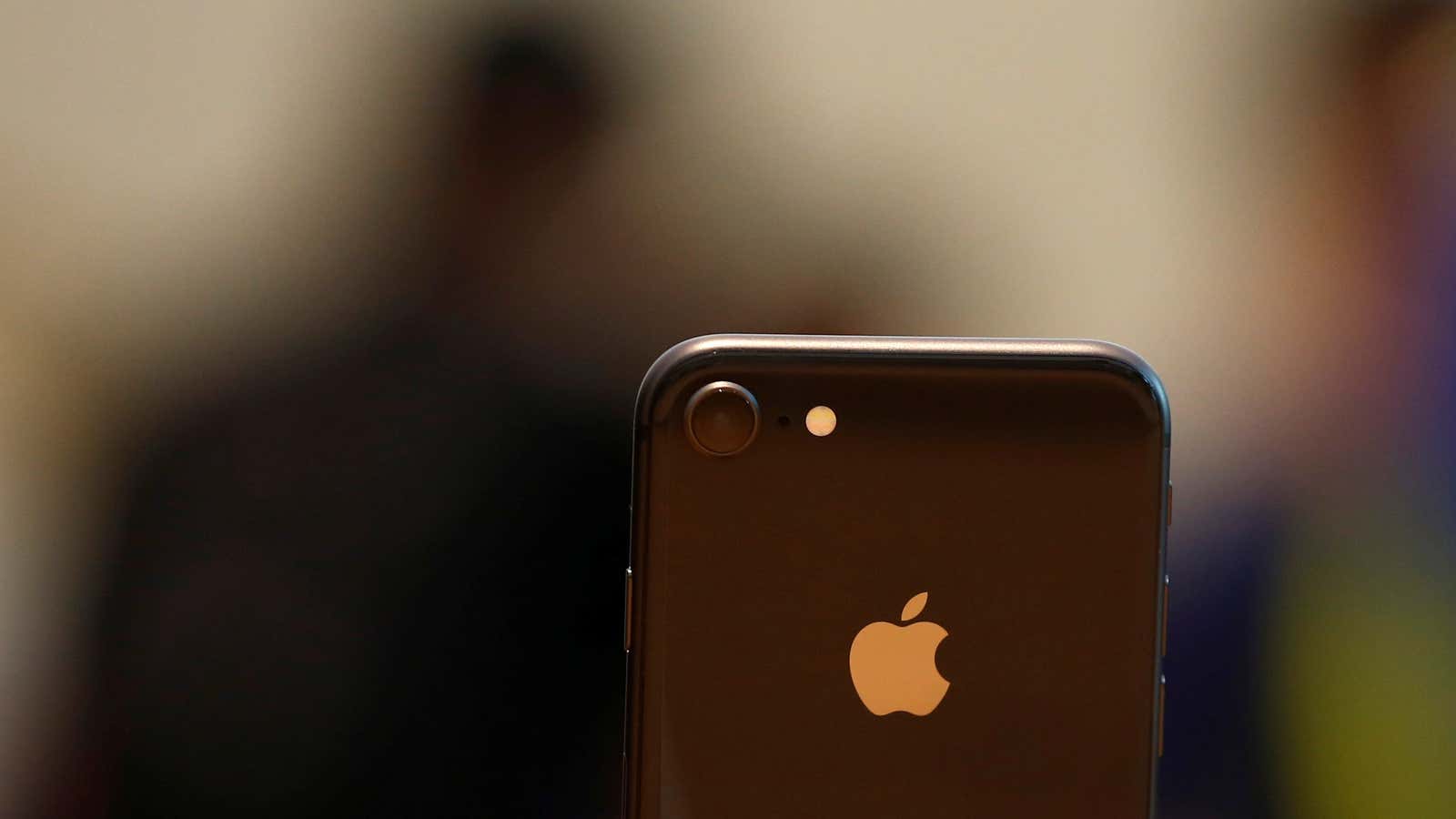When a new iPhone is available to pick up in stores, we usually see photos of lines stretching blocks long, as customers around the world proudly walk out with their shiny new rectangles. But today, as the iPhone 8, 8 Plus, and Apple Watch Series 3 hit the shelves, the usual lines were few and far between. While some stores—sorry, “Town Squares”—had large lines, some had none at all, The Verge reported.
In London, Apple staff reportedly outnumbered iPhone customers. And when I went to check out an Apple store close to Quartz’s office, I found about a dozen people waiting, and about as many security guards waiting to corral a crowd that clearly was not there. It was a few hours after the store had opened, and an Apple employee told me they still had new-model phones in stock.
These lackluster openings follow a week of mixed-bag reviews of Apple’s latest products. Most reviewers had generally positive things to say about the iPhone 8, even though the upgrades are minimal. But nearly all of them recommended waiting for the iPhone X: The mostly-screen iPhone was announced alongside the iPhone 8 at Apple’s event earlier this month, but will not be available for preorder until the end of October, most likely due to supply constraints.
There were also mixed reviews for the new Apple Watch, as some reviewers struggled with connectivity issues on the new built-in LTE cellular chip. While many enjoyed how fast the new watch was, others pointed out that little had changed in the watch’s design or functionality since it was first announced four years ago.
There were yet more concerns about the other product that debuted this week, the Apple TV 4K, with some reviewers questioning the price of the streaming device (more than double the price of similar offerings from Google and Roku). Others reported quality issues in the way it processes HD videos.
In all, it’s a far cry from the usual frenzy surrounding an Apple launch day, with products getting very down-to-earth scores from all but the most ardent Apple fans, and sensibly short lines of buyers.
Apple’s stock has been on a slide since it took the wraps off its newest products on Sept. 12. MarketWatch reported that Apple’s stock price fell by the greatest percentage of any launch day since the iPhone was first released 10 years ago.
While it’s entirely possible that everything will feel different in a month when the iPhone X comes out, perhaps we’ve hit a saturation point with Apple products as they are. Apple has been criticized in recent years for releasing iterative updates of its most popular products. The iPhones 6, 6S, 7, and now 8 all look almost identical. The three versions of the Apple Watch have been the same. New MacBooks have been criticized for adding functions no one wanted (has anyone found a real use for the Touch Bar yet?), and for removing keys and ports that users like.
Google and Amazon made great voice-activated speakers, so Apple must. Samsung put LTE in a watch, so Apple must. Microsoft made a tablet with a stylus and removable keyboard, so Apple must. Apple used to sell one (and then two) models of smartphone: It now has eight different models, in different sizes and prices, to purchase. And when they’re on the tables in Apple’s stores, it’s nearly impossible to tell most of them apart. I asked a clerk if they had the 8 in stock yet, and it turned out I was looking at them.
It’s no longer clear why there are now so many phones for sale, or which iPad is right for which consumer, or even who the new Apple Watch is for. As Business Insider’s Kif Leswing put it when describing the Apple watch’s LTE woes: “Consumers don’t buy the potential of a product—they buy it to do a specific job today.”
Apple is about to release a phone that starts at $1,000. It raised the price on a range of other products this month, and upped the starting price of the iPhone 8 by $50 over what the 7 cost a year ago. Its second-largest business is now revenue generated off of app downloads, music and movies. While there’s no indication that Apple will continue to be anything other than a moneymaking behemoth for a long time yet, price increases and service sales do not give the appearance of a company that is brimming with new ideas.
The most impressive thing the company has shown off in 2017, the year that was supposed to be its most impressive in a decade, was a $5 billion campus. Much like everything else the company released this year, the campus seemed to favor form over functionality.
Apple’s pristine cathedral of metal, glass, and marble, will be around for decades. But will we be speaking about its occupants in the present tense, or the past?
